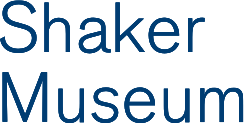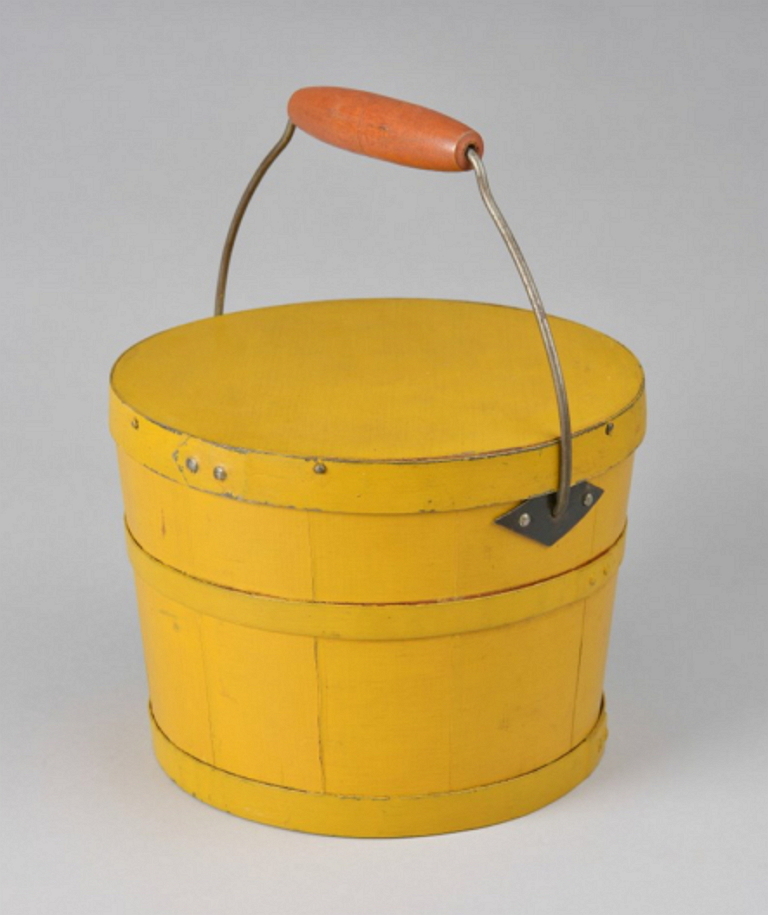Wheel, Spinning
Wool spinning wheel stamped "DM" used by Sister Emma J. Neale, Church Family, Mount Lebanon, NY
Description
Table (a) of oak, chestnut, maple; wheel (b), and wheel post (c). Oak wheel with metal spokes. Wheel support is mortised into a plank, as is spindle post which is 23" high. Three legs of maple mortised into plank.
Notes
Used by Emma Neale. Spinning wheels were among the earliest products of Shaker workshops. Prior to the Civil War at least six Shaker communities produced as many as 10,000 wool or "great" wheels and smaller flax wheels for sale to the world, with wool wheels making up the greater percentage.[1] Although Mount Lebanon Church Family account books indicate a steady sale of wheels early in the 19th century, those from the community are scarce, suggesting that production was limited. Levi Chauncey (1765-1847) and Henry DeWitt (1805-1855) were two Mount Lebanon wood workers who are known to have made spinning wheels. DeWitts diary from December 1827 to May 1828 lists some of the tasks he and Chauncey performed while making a series of wool wheels. This included using a type of automatic duplicating lathe instead of turning the parts entirely by hand.[2] Wheels made at Mount Lebanon have the initials "D.M." stamped into the end grain of the plank of wood or table into which the wheel support, legs, and spindle post were mortised. David Meacham, Sr., (1743-1826) was the first deacon of the Shakers at Mount Lebanon and, because of this, his initials were used to represent a variety of Shaker products for 50 years after his death. Two features make identification of Mount Lebanon wheels relatively easy. The wooden screw that adjusts the tension of the driving cord does so by pushing on the base of the spindle post. This makes the handle of the screw protrude beyond the end of the table. The spindle post does not have a horn or metal collar around the end where the wheel head is inserted. Without this reinforcement, the post itself has a larger diameter than other Shaker wheels with reinforcing collars. The spinning head of this wheel (SM&L #3706) is different from heads found on wheels made at other Shaker communities. It is an accelerator head, that is, it increases the number of revolutions made by the spindle in relation to the great wheel. Accelerator heads, often called Minors heads after the inventor, Amos Minor, had become very popular by 1820, and this is the Mount Lebanon Shakers' adaptation of this technological innovation. [1] David A. Pennington and Michael B. Taylor, American Spinning Wheels (Sabbathday Lake, ME: The Shaker Press, 1975); and Michael B. Taylor, "Shaker Spinning Wheel Study Continues," The Shaker Messenger 8 (Spring 1986): 8-11, 23-27. [2] Henry DeWitt, Diary 1827-1855, OC1WHi V: B-97
New York Mount Lebanon Church Family














